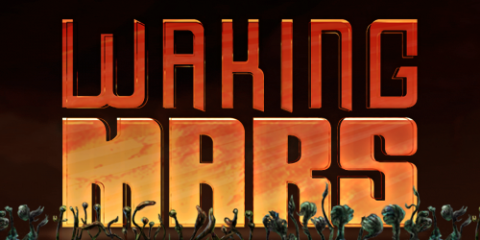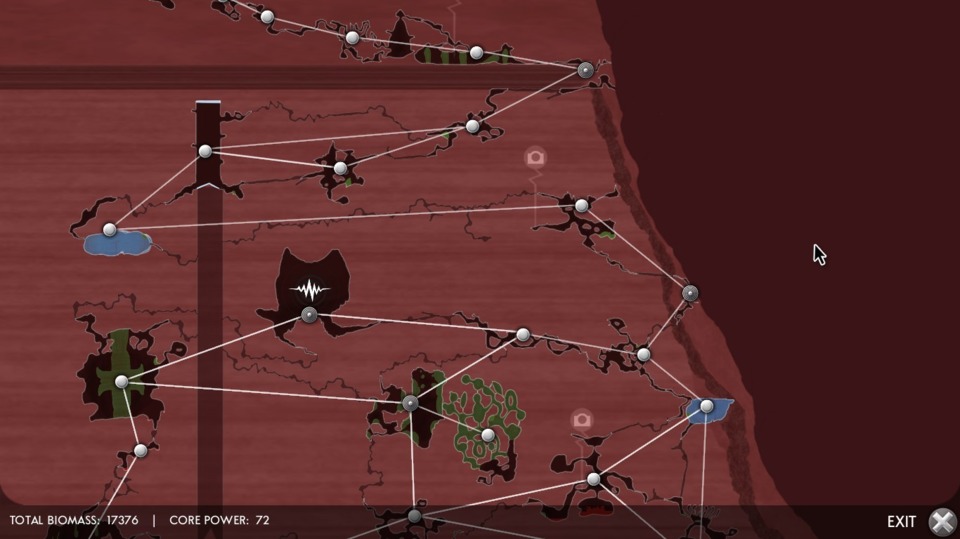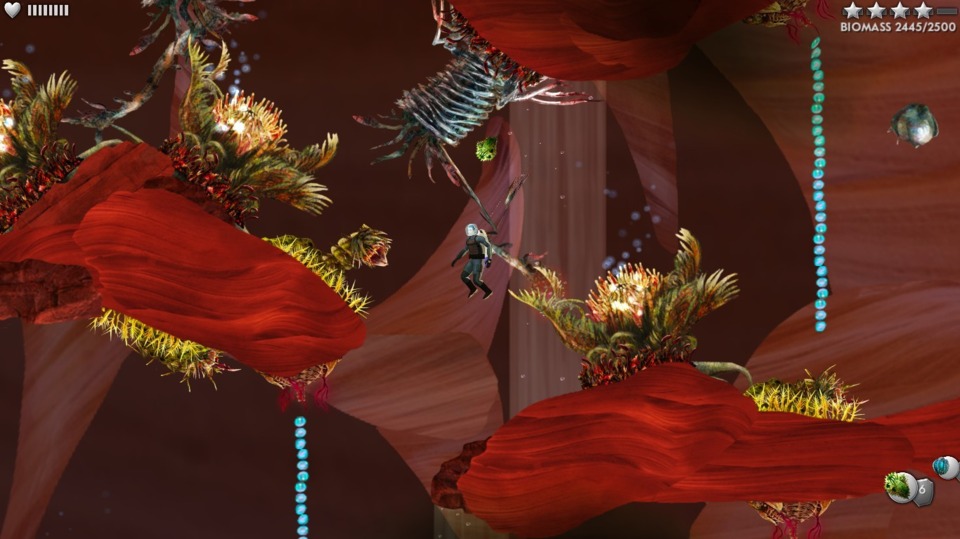Indie Game of the Week 37: Waking Mars
By Mento 0 Comments

As I work through my back catalog of Indie games I've accrued over the years, it strikes me just how unfortunate it is that so many slip through the cracks. Despite several years spent writing hundreds of Indie-focused features I'm still a dilettante in this field, having only seen the tip of the iceberg. Big reviewer/critic names like the major gaming sites and streamers and YouTubers can help raise an indie game's profile, as can a game's inclusion in a Steam sale or a Humble Bundle (though I have no idea what kind of returns the developers and publishers see from such heavy discounts). Also, if you're a fan of a specific genre, like graphic adventure games or RTS games, you probably have some specialist newsfeed to keep you informed of any exemplars rising from the Indie throng. However, if all of the above fail these Indies generally have to rely on individual discovery. Well, perhaps more specifically, folks rooting for diamonds in the immense morass that is the poorly curated Steam marketplace. Fortunately, the Indie ecosystem is such that the small teams behind these games only require a certain degree of success to survive: cases like Super Meat Boy or Minecraft are rare, when they can turn its handful of developers into millionnaires (or at least comfortably well-funded enough for any follow-up projects) almost overnight, but often it seems just a few hundred thousand sales - a fraction of the figures something like League of Legends or PUBG will see on a weekly basis - can be sufficient to make a living, if only barely.
The reason I bring all this up for an introduction is twofold: Waking Mars is a game I'd mysteriously never heard about until a few months before I pencilled it in for this feature, despite having launched in 2012 to "very positive" reviews (to use Steam's vernacular), and that it's a remarkable coincidence that the game itself is about what it takes to survive when the environment you live in is so hostile and unconducive to success, and how an external force might be able to lend a helping hand. As Dr. Liang Qi, an astrobotanist on a 2097 Mars expedition alongside his mathematician colleague Dr. Amani Ronga, the player is given the mission to explore a cave network underneath Mars after a robotic probe finds evidence of extraterrestrial life shortly before going offline. The game operates similarly to a 2D spacewhipper, with more emphasis on the space half, but takes a divergence by de-emphasizing conflict and instead presents something closer to a puzzle game. Each region of the cave network is blocked by an organism that separates areas until the biomass level for the current region has increased to a specific size. Various plant-like lifeforms collectively named "Zoa", after the Greek suffix for "animal" found in the names of certain creatures like protozoa, have varied but complementary roles in the ecosystem of ancient Mars that the player must discover and then help to propagate. There are also multiple immense "MegaZoa" organisms that are evolved to fulfill a specific role in bringing life back to these caves that present a mystery for the player to uncover. By planting, corralling, nurturing, fertilizing and occasionally destroying Zoa to replant a different strain, the player accelerates the ecosystem growth in order to proceed deeper into the caverns. In addition, the player is given various objectives to solve along the way, not least of which is finding a new route out of the caves once the original forward outpost is suddenly destroyed by the seismic shifts caused by the dramatic restructuring that results of the player's actions. Other objectives include finding out what happened to 0CT0, the original robot probe sent down into the caves, and seeking signs of any intelligent life deeper into the network.

It's a fascinating game, in part for its hard sci-fi story about the search for extraterrestrial life and how humanity might struggle to communicate with an alien intelligence in the vein of something like Arrival, but also in how it bucks the trend of traditional spacewhipper game design by effectively removing combat and platforming (the protagonist gets around via a jetpack with infinite fuel) and building itself around its xenobiology puzzles instead. While the gameplay, story and leading man can be a little dry, the animated Amani is a warm and lighthearted presence whenever she is in range of Liang's communications, and Liang is also joined by a highly sophisticated AI program named A.R.T. that, for a practical joke prior to the mission's start, was given a very outdated communication module that is prone to malapropisms and an inability to understand hyperbole and metaphors. Between ART, Amani and Liang's own internal monologues, the game keeps its story chugging along at a brisk pace with a regular infusion of new objectives to pursue and new questions to answer in addition to building up all these individual ecosystems. Later, the game provides a strong reason to build each region's ecosystem to its maximum size, which requires a certain level of efficiency and forethought to accomplish, presenting an optional challenge required for the best ending. The game also rewards experimentation: each new breed of Zoa includes a range of recorded observations the player can make on its diet, how it reproduces, its place in the food chain, its response to environmental changes like water or acid, and its vulnerabilities, etc.. Each full set of observations rewards an achievement and adds to the game's percentage of completion, in case you wanted more science to... science.
Waking Mars can be a little frustrating at times in the same way as something like The Sims or Viva Pinata: these are living, mostly automatic ecosystems and curating them can sometimes lead to a lot of unwanted results while your attention is drawn elsewhere. A late-game addition is the Cephad Zoa: this plant creates acidic or alkaline spores depending on where it is growing that, when combined with patches of fertile terrain for Zoa growth, will change its element. This will also kill any plants that currently inhabit that patch. Collecting these spores makes terraforming environments much easier, so it's worth having a few nearby, but at the same time having the spores floating around when you're elsewhere in that zone can lead to a lot of sudden and undesirable changes. Another annoyance: the best Zoa for quickly building biomass are the Ledon Zoa, which produce floating seeds that the player must manhandle into fertile terrain by flying into them with the jetpack at certain angles to change their trajectory, aiming for fertile patches while avoiding hazards; in practice, this is about as fun as herding that giant watermelon into the juicer in that one notorious level of Super Mario Sunshine that the Giant Beast East crew recently experienced. While I loved the story and the game's ideas, there were moments where I didn't care so much for the minute-to-minute gameplay of getting all those Zoa in place.

Overall though, I came away from Waking Mars impressed with its originality and its exceptional presentation, and I was hooked until I unlocked the "good ending" of its story some five or six hours after starting. The highest virtue of any Indie game is knowing when to gracefully bow out when it has shown you everything it has, and I'm happy to have solved all its enigmas some five years after the fact. Turns out my Indie game shame pile is not unlike the Mars of this game; it's often a long while before an intrepid explorer finds the treasures hidden deep within.
Rating: 4 out of 5.
| < Back to 36: Valiant Hearts: The Great War | > Forward to 38: Detective Grimoire |
